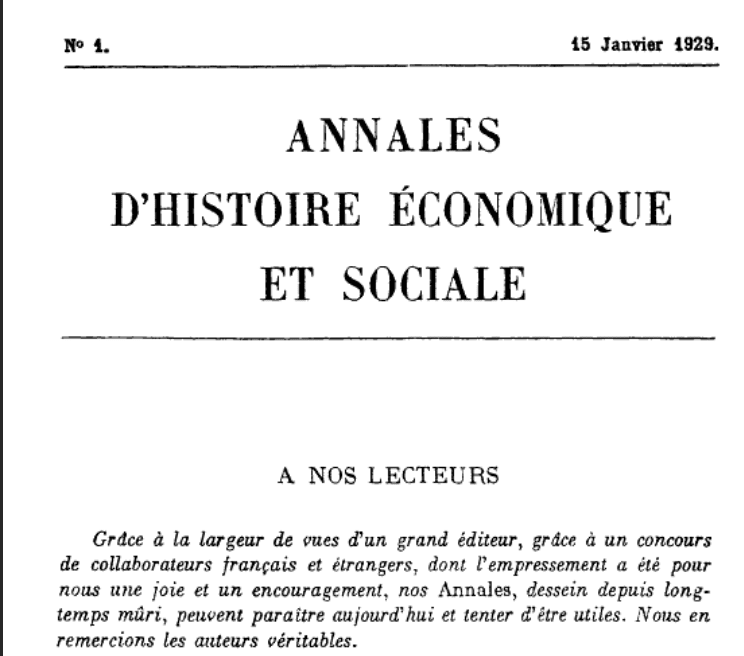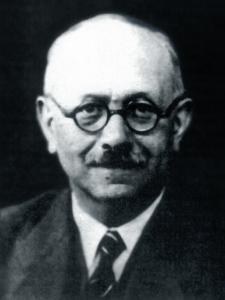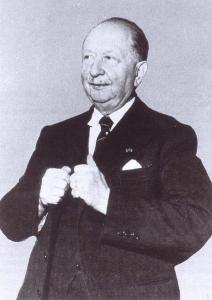“Tell me, daddy. What is the use of history?” (Bloch, 3). This is the opening line of Marc Bloch’s methodological work on historiography, The Historian’s Craft. This piercing question asked by a young boy to his historian father is innocent yet profound.
Bloch traced the implications of this question to two parallel spheres: an epistemic sphere, where history serves the function of intellectual inquiry that builds a base of knowledge on the past, and a pragmatic sphere, where history serves the function of having a practical use of understanding the past for living in the present.
For history to have the greatest payoff in both spheres, Bloch indicated that a historian must develop an understanding of the mentalité, “a conception of collective consciousness…focused on the mental and psychological characteristics of groups,” and an understanding of the longue durée, “the structural continuities intruding upon the course of historical change” (Gilderhus, History and Historians, 94–95). Historians who embrace these two concepts, along with other concepts to be unpacked in later posts, became those who participated in what is known as the Annales movement.
Founding the Annales Movement : The Inaugural Issue of Annales d’histoire économique et sociale
The founders of the Annales movement were two: Marc Bloch and Lucien Febvre—dear friends, Frenchmen, and colleagues in historical construction, first at the University of Strasbourg, then later when they were both called to Paris: Febvre to the College de France in 1933 and Bloch to the Sorbonne in 1936. Together they founded the journal, Annales d’histoire économique et sociale in 1929 (Breisach, Historiography, 345).
In the inaugural issue of Annales d’histoire économique et sociale, the two founding editors, Bloch and Febvre, wrote a preface to their readers. Even in that opening paragraph, the usefulness of history was inculcated. The editors asserted: “nos Annales, dessein depuis long-temps mûri, peuvent paraître aujourd’hui et tenter d’étre utiles” (Bloch and Febvre, “A Nos Lecteurs,” Annales D’histoire économique Et Sociale 1, no. 1 [1929]:1–2). This project, they hoped, would bear much fruit and be of use to their colleagues in social sciences broadly and history specifically.
The journal aimed to put in dialog multiple disciplines within the realm of the social sciences, particularly history, sociology, economics, and the budding discipline of psychology. Bloch, an economic historian, believed that practicing at the cross-section of multiple disciplines enhanced study of the longue durée. Furthermore, since historians have a deficit and dearth in their knowledge of periodizations, beyond their specialization, the journal intended to fill that dearth for readers and dispel some common misconceptions of what had become de rigueur.
The Fashionable Idea of Civilization
One fashionable pretension about historical studies was that civilizations (still a recent and evolving term) might be bifurcated between primitive/exotic civilizations and modern civilizations, the former allegedly less civilized than the latter.
Fernand Braudel, a disciple of Bloch and Febvre, who later influenced the shape of the Annales movement, wrote a significant undergraduate textbook modeling the Annales school’s methodology through fact and example. This text, sketching the longue durée of civilizations, studied civilizations in two parts. The first looked at civilizations outside of Europe, namely the Muslim world, Africa, and the Far East. The second part examined Europe and America.
This work was essentially a global history for students. Braudel described a civilization as a “sum total of its cultural assets” (Braudel, A History of Civilizations, 6). Civilizations are distinguished from one another by maintaining their original character (Braudel, 8). Nonetheless, civilizations broker and trade the commodity of ideas with one another, shaping and reshaping each other in the process. Braudel promoted the Annales agenda in chapter two by emphasizing the ways other social sciences: geography, sociology, economics, and collective psychology—contribute to historical construction. He asserted: “To define the idea of civilization requires the combined efforts of all the social sciences” (Braudel, 9).
To glimpse the work of those in parallel disciplines fosters a curiosity that gives rise to innovation. The best kind of historical construction is history done in community, where colleagues collaborate and cooperate to produce a thick and rich depiction of the past. As Breisach once said, “The labor for a total history requires a wide repertoire of interests and methods” (Breisach, 345).
Bloch and Febvre envisioned a collegial environment for historians to collaborate with colleagues from other disciplines within the social sciences. The effort might even have an organic quality, where disciplines existed within an environment characterized by a mutually beneficial ecology.
Perhaps this is why the inaugural issue of Annales d’histoire économique et sociale gave a subtle nod to Voltaire’s classic quip at the end of Candide, the editors wrote: “Rien de mieux, bien entendu, si chacun, pratiquant une spécialisation légitime, cultivant laborieusement son propre jardin” (“A Nos Lecteurs,” 1–2). For these two editors, tending to one’s own garden well had a concomitant effect upon one’s neighbor’s garden as well.















